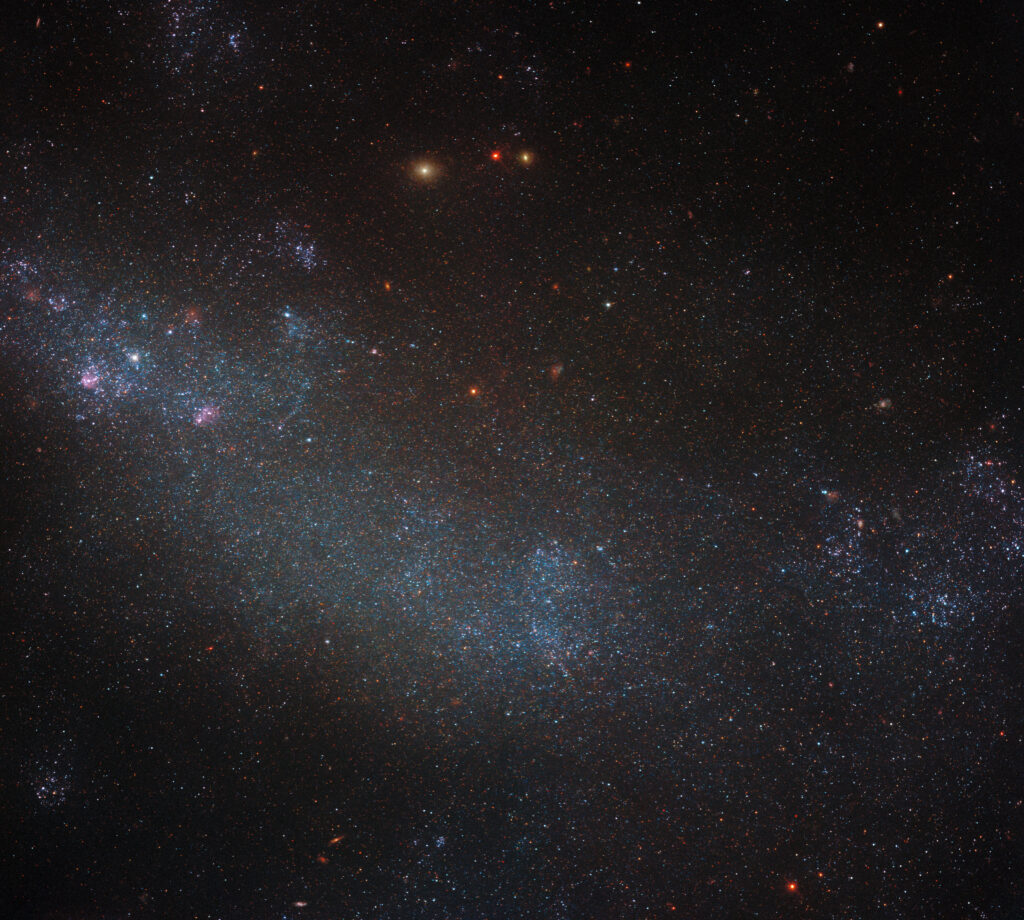The presented image was obtained by the Hubble telescope. It shows a dense field of stars located against a background of gas, dust and more distant objects. The stars take up so much space in the image that it is quite difficult to immediately understand that there is an entire galaxy in front of us.

The galaxy photographed by Hubble bears the designation ESO 245-5. It is a relatively close neighbor of the Milky Way. ESO 245-5 is located at a distance of 15 million light-years from Earth in the direction of the constellation Phoenix.
Another reason why it may be difficult to immediately determine that ESO 245-5 is a galaxy lies in the obvious lack of structure. We often admire Hubble’s impressive images of spiral galaxies, which have an ordered structure. ESO 245-5, on the other hand, is classified as an IB(s)m type galaxy. The IB(s)m designation means that the galaxy is irregular (I), has a bar (B), has a small spiral structure (s) and belongs to the Magellanic type (m).
The term “irregular” means that the galaxy does not have a clear structure. Most often, such galaxies are characterized by a chaotic shape without a pronounced core and spiral branches.
The second term means that the galaxy has a bar — a dense band of stars that crosses its center. The third term suggests that there are hints of a spiral structure in ESO 245-5, but nothing clear or definite (that’s why the “s” is bracketed). Finally, the latter term indicates the similarity of ESO 245-5 to the Magellanic Clouds, two dwarf galaxies that are close neighbors of the Milky Way.
Earlier we talked about the fact that the Small Magellanic Cloud might actually consist of two galaxies.
According to https://esahubble.org
Follow us on Twitter to get the most interesting space news in time
https://twitter.com/ust_magazine


